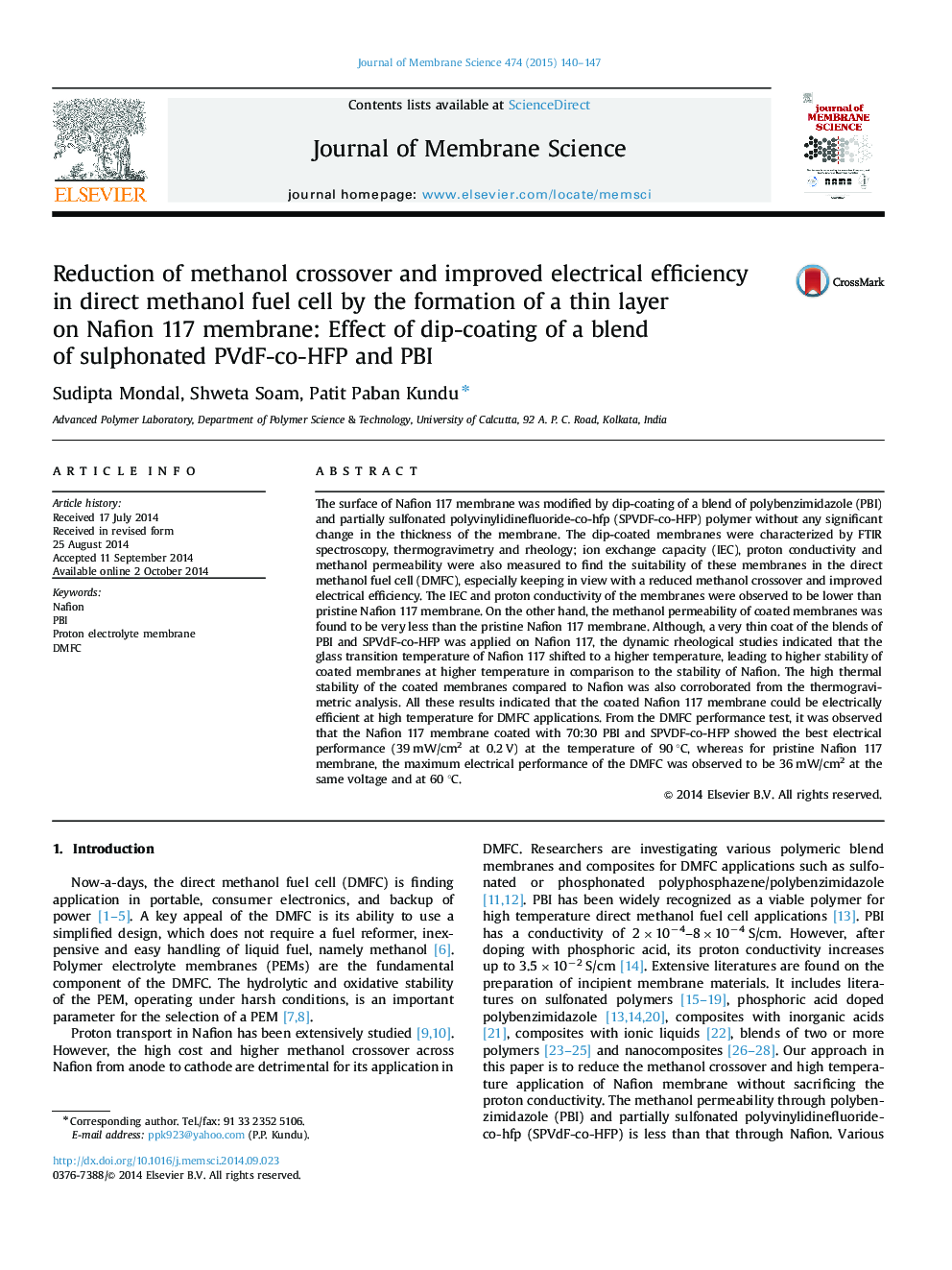| کد مقاله | کد نشریه | سال انتشار | مقاله انگلیسی | نسخه تمام متن |
|---|---|---|---|---|
| 633281 | 1456025 | 2015 | 8 صفحه PDF | دانلود رایگان |

• Coating of the blends of SPVDF-co-HFP and PBI on Nafion 117.
• Lowering of methanol crossover of Nafion 117 was found.
• Higher stability of coated membranes at higher temperature was observed.
• Maximum performance (39 mW/cm2) at 90 °C resulted with the membrane coated with 70:30 PBI and SPVDF-co-HFP.
The surface of Nafion 117 membrane was modified by dip-coating of a blend of polybenzimidazole (PBI) and partially sulfonated polyvinylidinefluoride-co-hfp (SPVDF-co-HFP) polymer without any significant change in the thickness of the membrane. The dip-coated membranes were characterized by FTIR spectroscopy, thermogravimetry and rheology; ion exchange capacity (IEC), proton conductivity and methanol permeability were also measured to find the suitability of these membranes in the direct methanol fuel cell (DMFC), especially keeping in view with a reduced methanol crossover and improved electrical efficiency. The IEC and proton conductivity of the membranes were observed to be lower than pristine Nafion 117 membrane. On the other hand, the methanol permeability of coated membranes was found to be very less than the pristine Nafion 117 membrane. Although, a very thin coat of the blends of PBI and SPVdF-co-HFP was applied on Nafion 117, the dynamic rheological studies indicated that the glass transition temperature of Nafion 117 shifted to a higher temperature, leading to higher stability of coated membranes at higher temperature in comparison to the stability of Nafion. The high thermal stability of the coated membranes compared to Nafion was also corroborated from the thermogravimetric analysis. All these results indicated that the coated Nafion 117 membrane could be electrically efficient at high temperature for DMFC applications. From the DMFC performance test, it was observed that the Nafion 117 membrane coated with 70:30 PBI and SPVDF-co-HFP showed the best electrical performance (39 mW/cm2 at 0.2 V) at the temperature of 90 °C, whereas for pristine Nafion 117 membrane, the maximum electrical performance of the DMFC was observed to be 36 mW/cm2 at the same voltage and at 60 °C.
Journal: Journal of Membrane Science - Volume 474, 15 January 2015, Pages 140–147